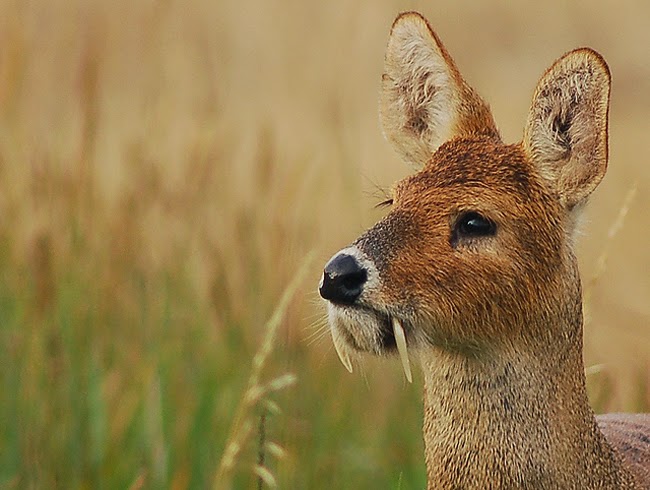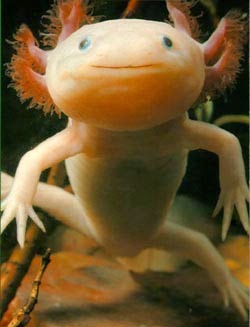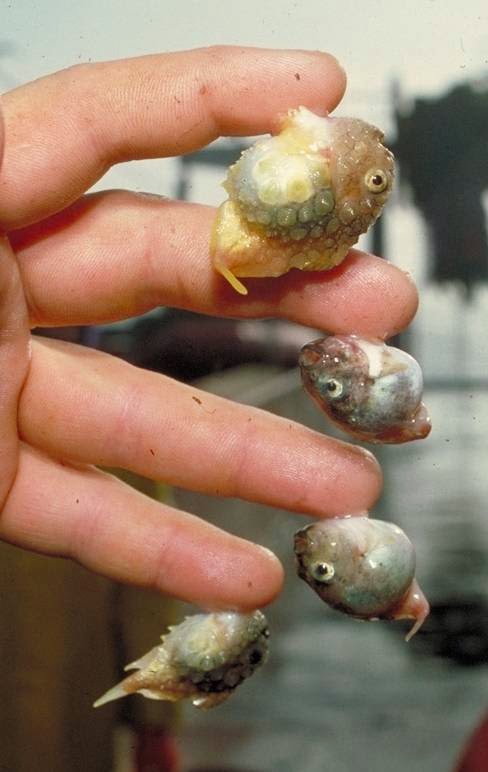Our Strange World
Hello Friday and welcome St. Nicholas!
I know we’re all getting ready for St. Nicholas to pay us a visit tonight. I know parents are running crazy with last minute gift shopping for the little ones. I even got something for my baby boy. Of course I did!!!! So maybe tomorrow, after you’re done with the morning madness of unwrapping gifts and you get your hearing back from all the screaming haha, you’ll grab a hot chocolate, put your doggy slippers on and fall back in the sofa with your laptop on your knees. Sounds like me! Haha Then scroll through this list of really strange animals to be amused and freaked at the same time, by mother nature which never seizes to amaze us.
It’s one of my favorite pastime activities, especially at a time like this, when I don’t feel like going out. I flip through the channels and somehow I always end up watching some documentary, movie or cartoons. So here are some strange animals, some of you probably didn’t know existed on Earth. I tried to research as many as possible, but they’re too many to count. So here is my special selection for you to enjoy on a cold day!
Bergamasco Shepherd
These herding dogs were bred for the freezing Alps and have evolved to possess thick dreaded coats.
Ankole-Watusi
Ankole longhorns and their massive horns have survived in Africa for thousands of years. Their horns are used in defense and cooling and can weigh up to 100 pounds each and reach 8 feet from tip to tip.
Dumbo Octopus
The ear-like fins of this octopus have earned it the name “Dumbo.” The octopus lives at extreme depths of 10,000 to 11,000 feet, searching for worms and other crustaceans at the seafloor.
Irrawaddy Dolphin
Irrawaddy dolphins are found in coastal areas in South and Southeast Asia. These animals are known for their bulging forehead and short beak, giving them a far stranger appearance than other dolphins.
Saiga Antelope
The saiga is a critically endangered antelope that inhabits the Eurasian steppe, including Dzungaria and Mongolia. Its strange nose is extremely flexible and helps to filter out dust kicked up by the migrating herd.
Red-Lipped Batfish
Batfish are found in the waters around the Galapagos Islands, but are terrible swimmers. Instead, the fish have learned to walk the ocean floor on their fins.
Chinese Water Deer
Chinese Water Deer have earned the nickname “Vampire Deer” for their prominent tusks, which are used in territorial battles.
Pyura Chilensis (The Living Rock)
It can be difficult to believe, but these “rocks” are living, breathing organisms. Their appearance allows them to blend into Chilean beaches and avoid predators. Interestingly, these creatures have both male and female organs and can breed individually.
Pacu Fish
The Pacu Fish, native to South America, is nicknamed the “ball cutter” by local male fishermen, who fear swimming in the water because of the animals human-like smile.
Glaucus Atlanticus
Called the “blue dragon”, this fantastical creature is actually a one inch long sea slug. Commonly found off the East and South Coast of South Africa and Australia, divers should beware the powerful sting of this beast.
Bearded Vulture
These beautiful birds inhabit Everest, the Himalayas and other mountainous regions in Europe and Asia. They were nearly eradicated because people used to fear that bearded vultures would attack lambs and children, and now, the WWF estimates only 10,000 are left.
Eastern Long-Necked Turtle
These turtles with a rather literal name can be found throughout Australia. Their remarkable necks can reach the same length as their shells, or around 10 inches.
Surinam Toad
Native to South America, the leaf-like appearance of the surinam is a natural defense against predators. The toads have a unique breeding method, where the male plants fertilized eggs into the back of the female who carries them until they emerge from pockets in her skin.
Sarcastic Fringeheads
While the name would have you think otherwise, these fish are far more vicious than they are sarcastic. Found in the waters off the West Coast of America, fringeheads can grow 12 inches long and have eerily large mouths, which they press up against each others, as if kissing, to assert authority.
Chrysopelea (The Flying Snake)
In what is many people's worst nightmare, this serpent climbs trees and then jumps down. By flattening its body and flaring out its ribs, the snake can glide through the air.
Ring-tailed Cat
Ring-tailed cats are a member of the raccoon family, native only to arid regions of North America. The ringtail is said to be so easy to domesticate that miners and settlers once kept them in their cabins as companions and vermin hunters, earning the name “miner’s cat.”
Blobfish
Deep in the waters off the coast of Australia and Tasmania is the ‘unique’ blobfish. The flesh of a blobfish is a gelatinous mass that’s less dense than water, giving the fish its unique look, and allowing it to float above the seafloor without swimming.
Lowland Streaked Tenrec
Found only in the rainforests of Madagascar, this strange creature is somewhat similar to a porcupine. The barbs on the animal’s back act as both a defensive measure and a complex communication system. The quills produce a faint chattering sound when vibrated and families learn to talk through this sound.
Enypniastes
Enypniastes is a deep sea cucumber which leaves nothing to the imagination and lives at depths of up to 16,400 feet. The red area is the animal’s mouth. Around it are tentacles, which scoop up edible mud from the seafloor. From there, it enters the creatures gut.
Gobi Jerboa
The Gobi Jerboa is a species of rodents found in China and Mongolia. Jerboas have kangaroo-like hind legs which make the creature an amazing runner and jumper. Along with disproportionately large ears and tails, which enhance hearing and balance, this is a truly bizarre creature.
Japanese Spider Crab
This arthropod can reach heights of 12 feet tall and weigh up to 42 pounds, all while moving like a spider - yikes! The crabs are only found in the waters off the island of Honshū.
Frilled shark
In the waters of the Atlantic and Pacific Oceans this prehistoric beast boasts 300 trident-shaped teeth, aligned in 25 rows to rip through any prey. Scientists also believe that the frilled shark breaks the record for gestation periods amongst sharks, taking three and a half years to give birth.
Gharials
These 20 foot long lizards weigh in at 350 pounds and used to dominate all major river systems, where their long, thin jaws proved adept at hunting and eating fish. Overfishing by humans has seen these reptiles reduced to 2% of their former strength.
NOTE: For those of you who want to impress your kids haha, know that this crocodile served as inspiration to create one of the ancient frozen crocodiles in Ice Age 2 - The Meltdown. There were two of them chasing Many down through out the entire movie! Check it out!
NOTE: For those of you who want to impress your kids haha, know that this crocodile served as inspiration to create one of the ancient frozen crocodiles in Ice Age 2 - The Meltdown. There were two of them chasing Many down through out the entire movie! Check it out!
 |
| He was still frozen here haha |
Yeti Crab
Only recently discovered in 2005, not much is known about this hairy crustacean found in the South Pacific Ocean.
Snub Nosed Monkey
David Attenborough once remarked that these marvelous monkeys look like “elves” and others like “plastic surgery gone too far.” Found in Asia, at heights of up to 13,000 feet, these primates with a short stump of a nose are rarely spotted.
Barreleye
The barreleye, found at depths of 2000 feet in the Atlantic, Pacific and Indian Oceans, is most notable for its transparent head and highly sensitive eyes. The green lenses above each eye allow the fish to filter out what little sunlight makes it down to these depths and focus on the lights of its prey.
Gerenuk
Gerenuk comes from the Somali language and means “giraffe-necked.” To feed from taller branches, gerenuks will stand on their hind legs.
Goblin Shark
The terrifying goblin shark measures between 8 and 13 feet and was first discovered in 1898. Referred to as a ‘living fossil,’ these terrifying animals are the only surviving member of a 125 million year-old family.
Mantis Shrimp
The colorful mantis shrimp spends most of its life tucked away in burrows and holes, meaning that we know very little about them. Ancient Assyrians referred to the creatures as “sea locustus”, while more recently they have been called “prawn killers” and “thumb splitters,” because of their extremely powerful claws. The shrimp is capable of breaking through aquariums by moving at speeds of up to 50 miles per hour.
NOTE: Tell your kids this shrimp mantis is not the same with the Mantis (bug) that also serves as one of the main characters in Kung Fu Panda. The Mantis there is one of the King Fu Masters living in the Temple next to Master Tigress, Crane, Snake, Monkey and Viper. Their Teacher was Masre Shifu. haha. Hey! I'm only here to help you look good ok?
NOTE: Tell your kids this shrimp mantis is not the same with the Mantis (bug) that also serves as one of the main characters in Kung Fu Panda. The Mantis there is one of the King Fu Masters living in the Temple next to Master Tigress, Crane, Snake, Monkey and Viper. Their Teacher was Masre Shifu. haha. Hey! I'm only here to help you look good ok?
 |
| Master Mantis |
Aye-aye
The aye-aye is a nocturnal lemur native only to Madagascar. The creature has rodent-like teeth which it uses to chew small holes into trees and then uses its narrow fingers to pull grubs out.
Panda Ant
This fluffy creature with panda markings is actually a type of wingless wasp from South America. It has only been spotted a handful of times but it is known to have a potent sting.
Leaf-Tailed Gecko
Can you spot the lizard in the first image? The leaf-tailed gecko is a master of disguise found in Madagascar. With a leaf-shaped tail, it can blend into dense jungle.
The Axolotl
The Axolotl (or ajolote) (Ambystoma mexicanum) is the best-known of the Mexican neotenic mole salamanders belonging to the Tiger Salamander complex. Larvae of this species fail to undergo metamorphosis, so the adults remain aquatic and gilled. The species originates from the lake underlying Mexico City. Axolotls are used extensively in scientific research due to their ability to regenerate most body parts, ease of breeding, and large embryos. They are commonly kept as pets in the United States, Great Britain, Australia, Japan (where they are sold under the name Wooper Rooper, and other countries.
Axolotls should not be confused with waterdogs, the larval stage of the closely related Tiger Salamanders (Ambystoma tigrinum and Ambystoma mavortium), which is widespread in much of North America which also occasionally become neotenic, nor with mudpuppies (Necturus spp.), fully aquatic salamanders which are unrelated to the axolotl but which bear a superficial resemblance.
The Angora Rabbit
The Angora rabbit is a variety of domestic rabbit bred for its long, soft hair. The Angora is one of the oldest types of domestic rabbit, originating in Ankara, Turkey, along with the Angora cat and Angora goat. The rabbits were popular pets with French royalty in the mid 1700s, and spread to other parts of Europe by the end of the century. They first appeared in the United States in the early 1900s. They are bred largely for their long wool, which may be removed by shearing or plucking (gently pulling loose wool).
There are many individual breeds of Angora rabbits, four of which are ARBA recognized. Such breeds include, French, German, Giant, English, Satin, Chinese, Swiss, Finnish, to name a few.
Christmas Tree Worm
Scientists found this strange creature at the Great Barrier Reef's Lizard Island and named it, aptly, the Christmas tree worm. One better might have been "fake plastic Christmas tree worm," but it's still a pretty good name. (Scientists also refer to it as Spirobranchus giganteus). The spiral "branches" are actually the worm's breathing and feeding apparatus. The worm itself lives in a tube, and it can withdraw its tree-like crowns if threatened.
Sea Angel
We wouldn't be surprised to find that sea angels are in the same family as, say, the mythological Sirens. They're called angels, but are actually a predatory sea snail. This particular specimen,Platybrachium antarcticum, "flies through the deep Antarctic waters hunting the shelled pteropods (another type of snail) on which it feeds," according to the Marine Census of Life.
Black Seadevil Anglerfish
This rare deep-sea anglerfish - known as a black sea devil - was captured on film for the first time off the coast of Central California.
NOTE: This ugly fellow was present in Finding Nemo. Yesss, that luring light in the deep after Marlin and Dory escape the exploding sub. This is the guy! The one with the light on top of his head and with lots of sharp and crooked teeth!
NOTE: This ugly fellow was present in Finding Nemo. Yesss, that luring light in the deep after Marlin and Dory escape the exploding sub. This is the guy! The one with the light on top of his head and with lots of sharp and crooked teeth!
A Pea-Sized Frog
This frog was generously described as "pea-sized" when Conservation International announced, in August 2010, theMicrohyla nepenthicola frog's discovery in a pitcher plant on Borneo, an island in Southeast Asia. At first, scientists assumed they were looking at young frogs, but soon concluded that even the largest of the adult males fail to reach more than half an inch in length. Now, they describe it as the tiniest frog known to inhabit the Old World (Europe, Asia and Africa).
Spiny lumpsucker
And a lumpy-looking sucker it is. The lumpsucker uses modified pelvic fins that have evolved into adhesive discs to stick itself onto a surface like a rock, or as the second photo below, onto fingers.
Hope you enjoyed this and if the kids keep interrupting you can always show them the pictures and translate what these animals are all about. It's never too early to start knowing the world!
Mwuah! Keep warm and nibble on sweets!
Mela


















































Comments
Post a Comment